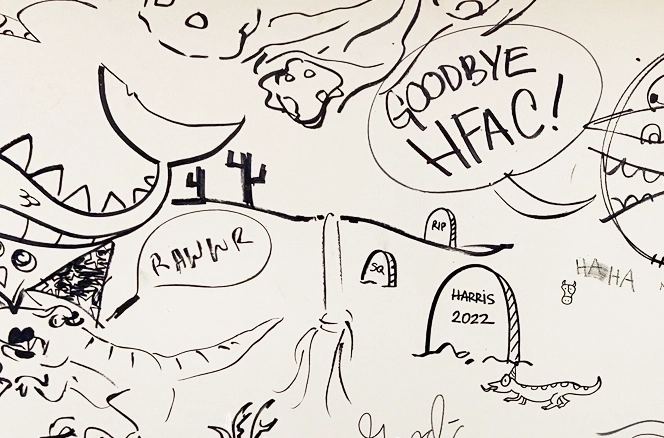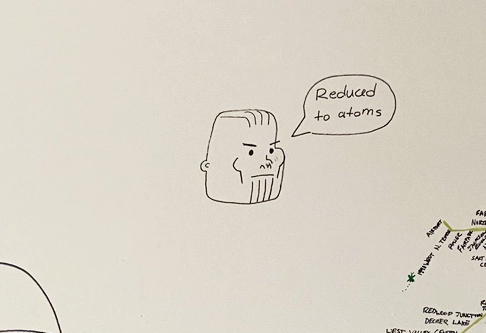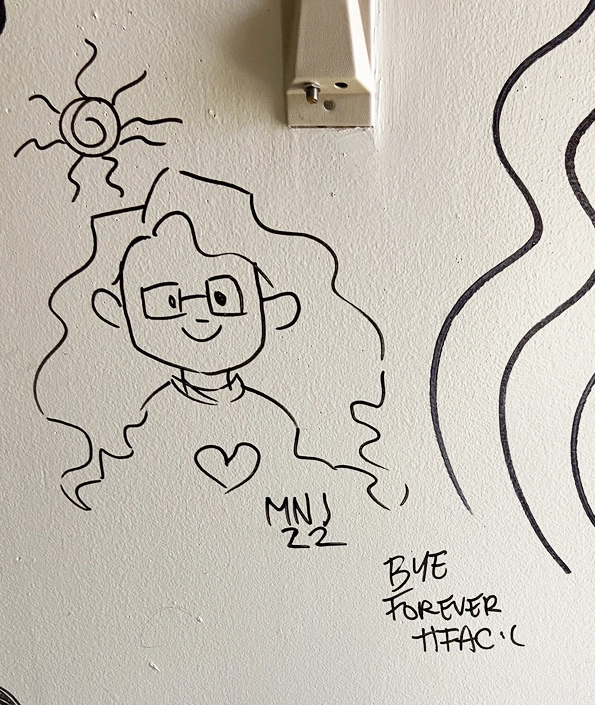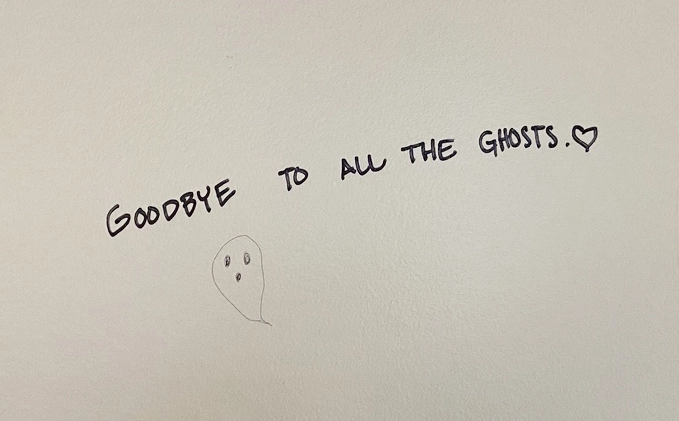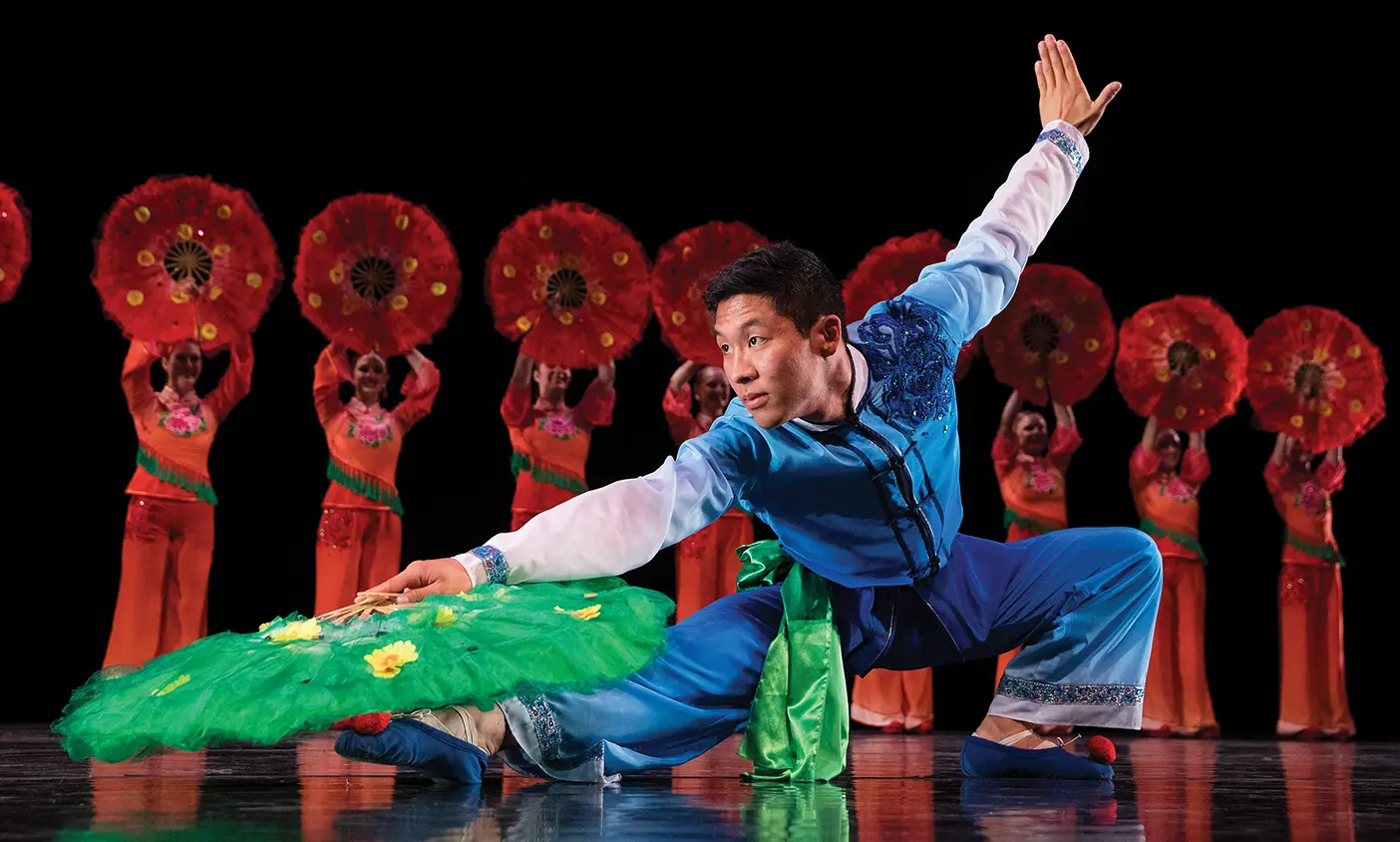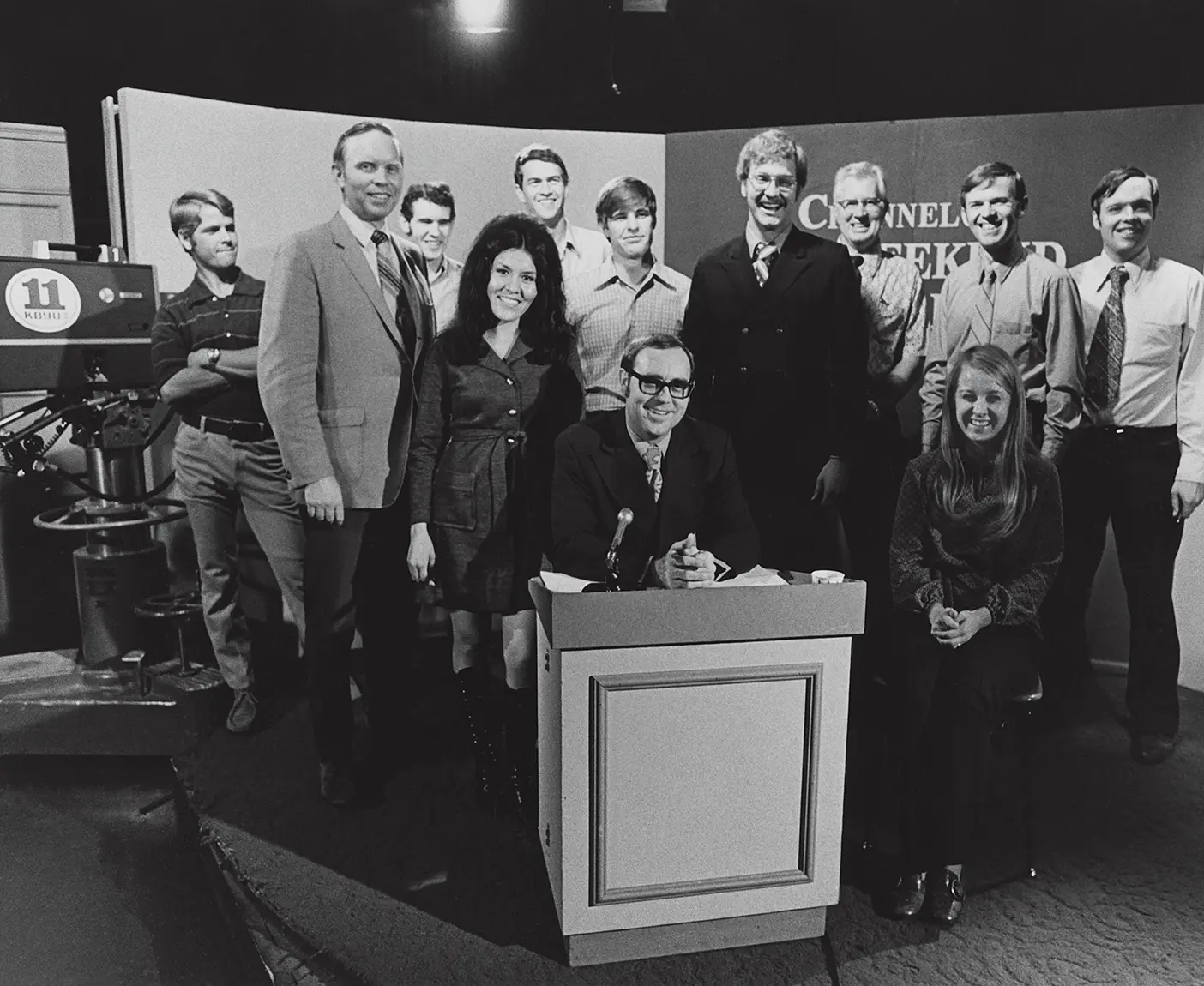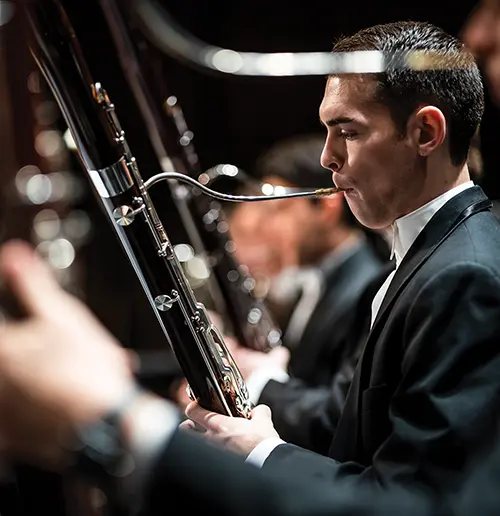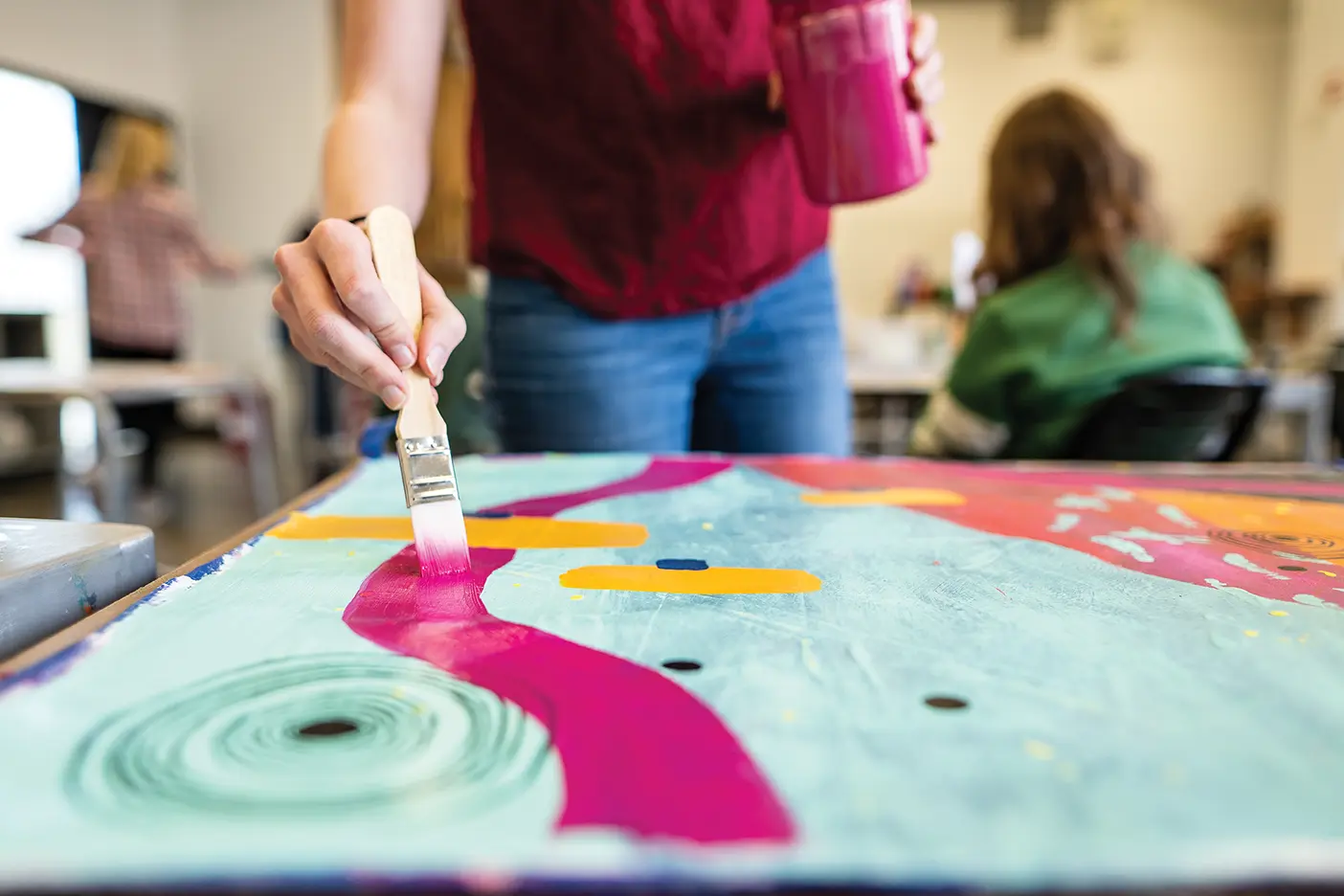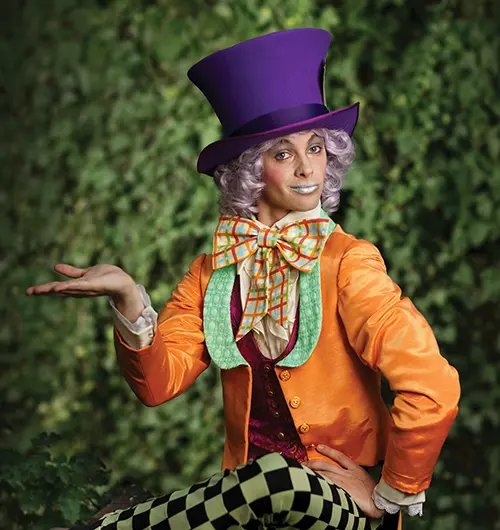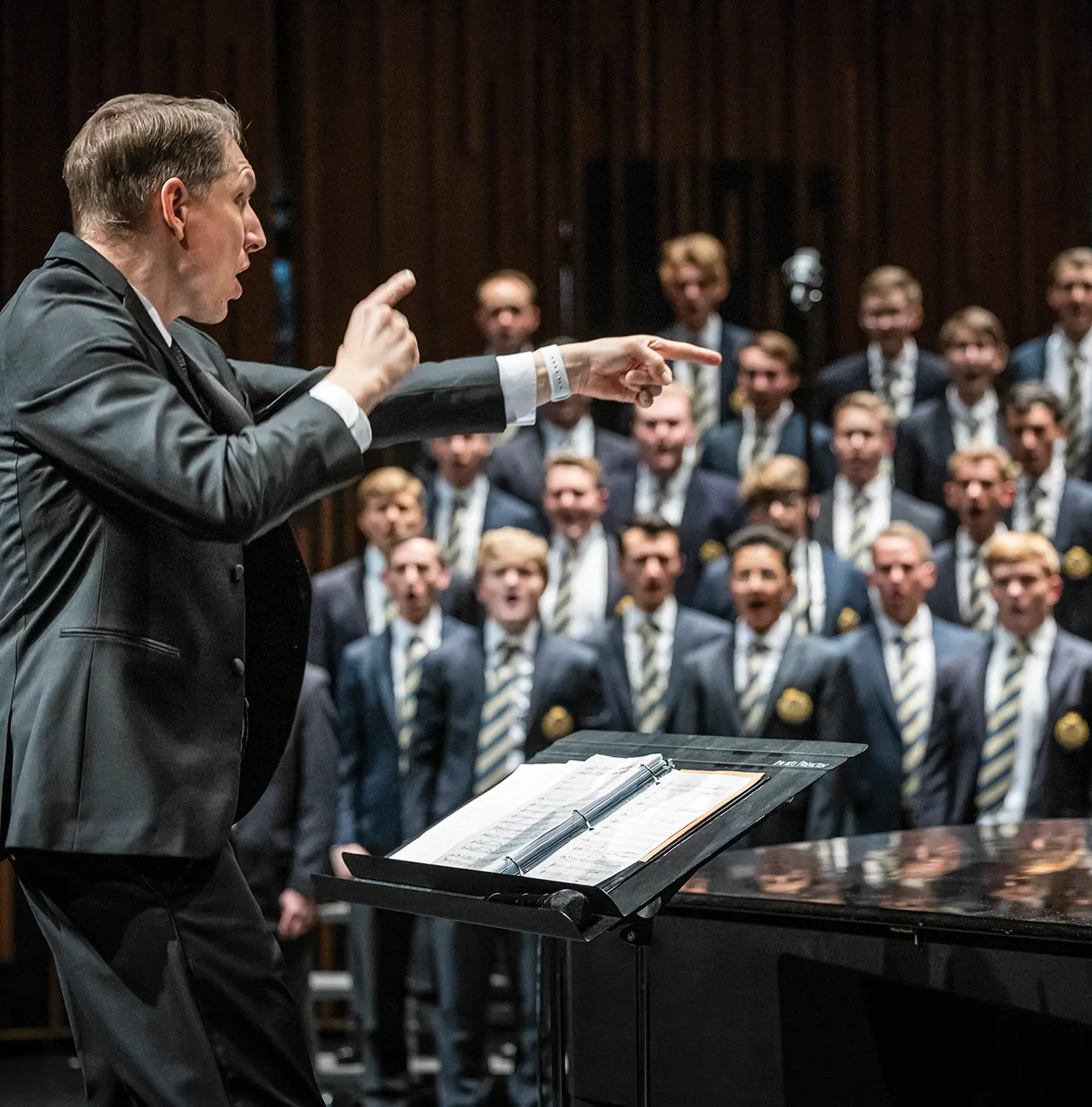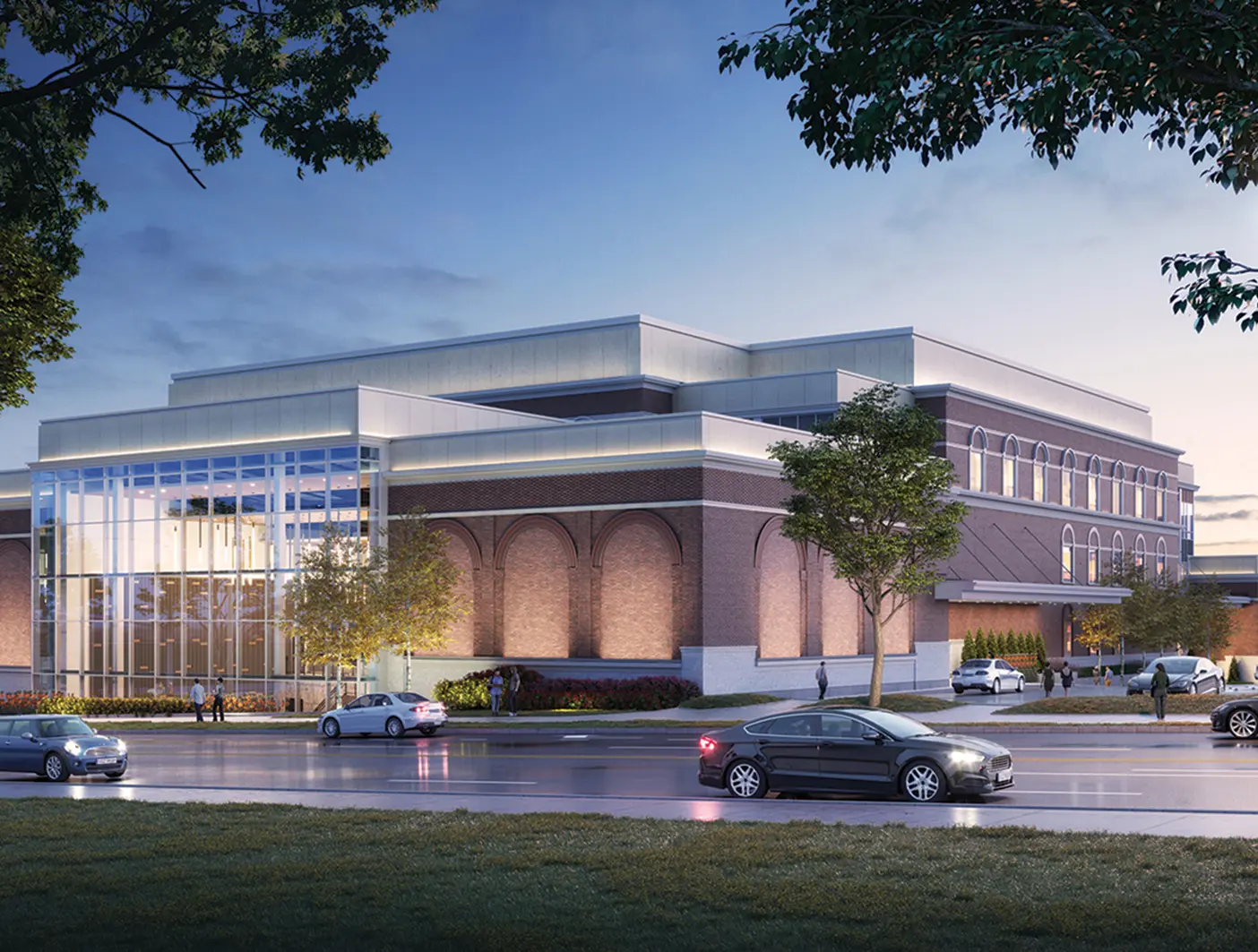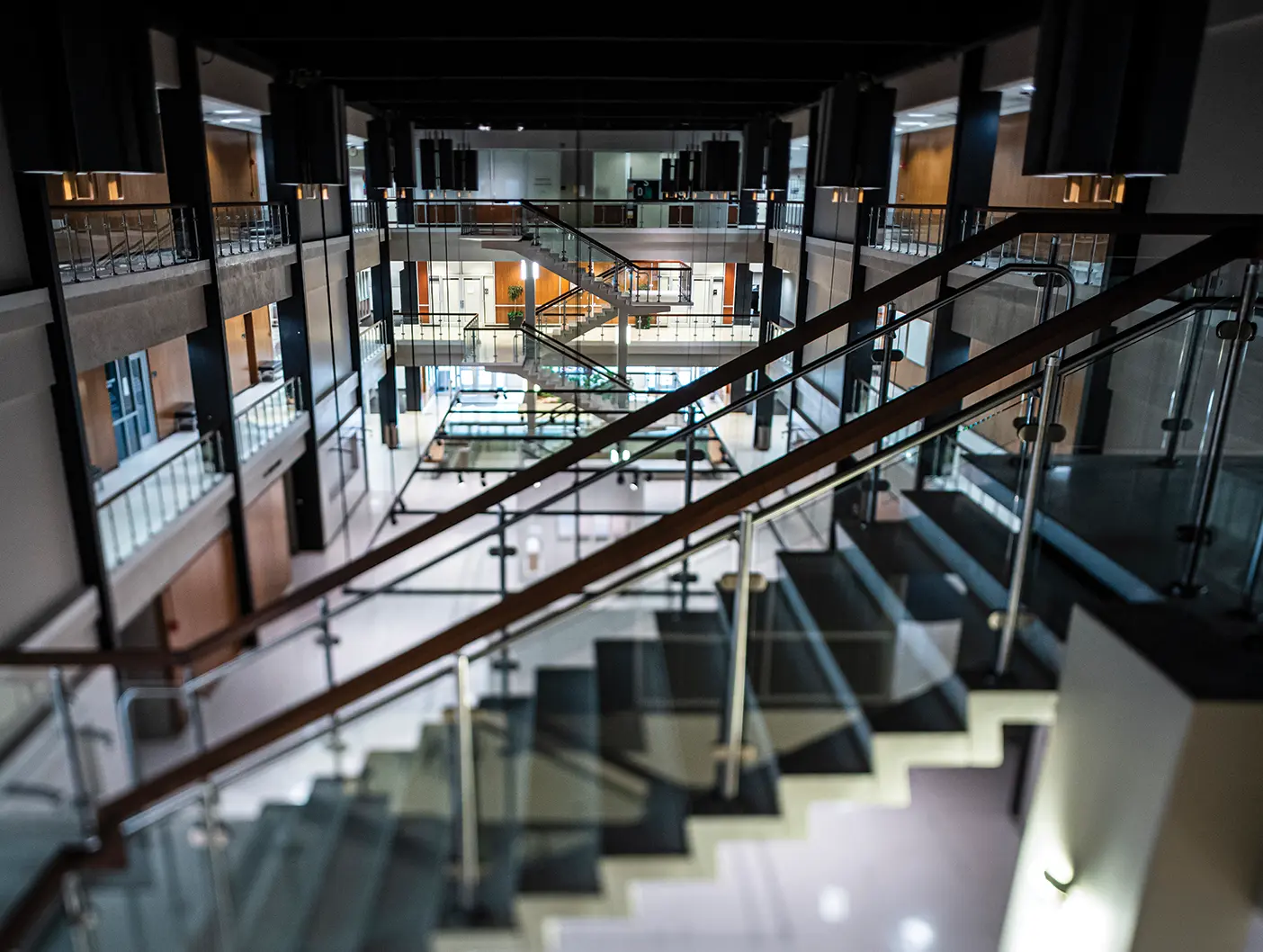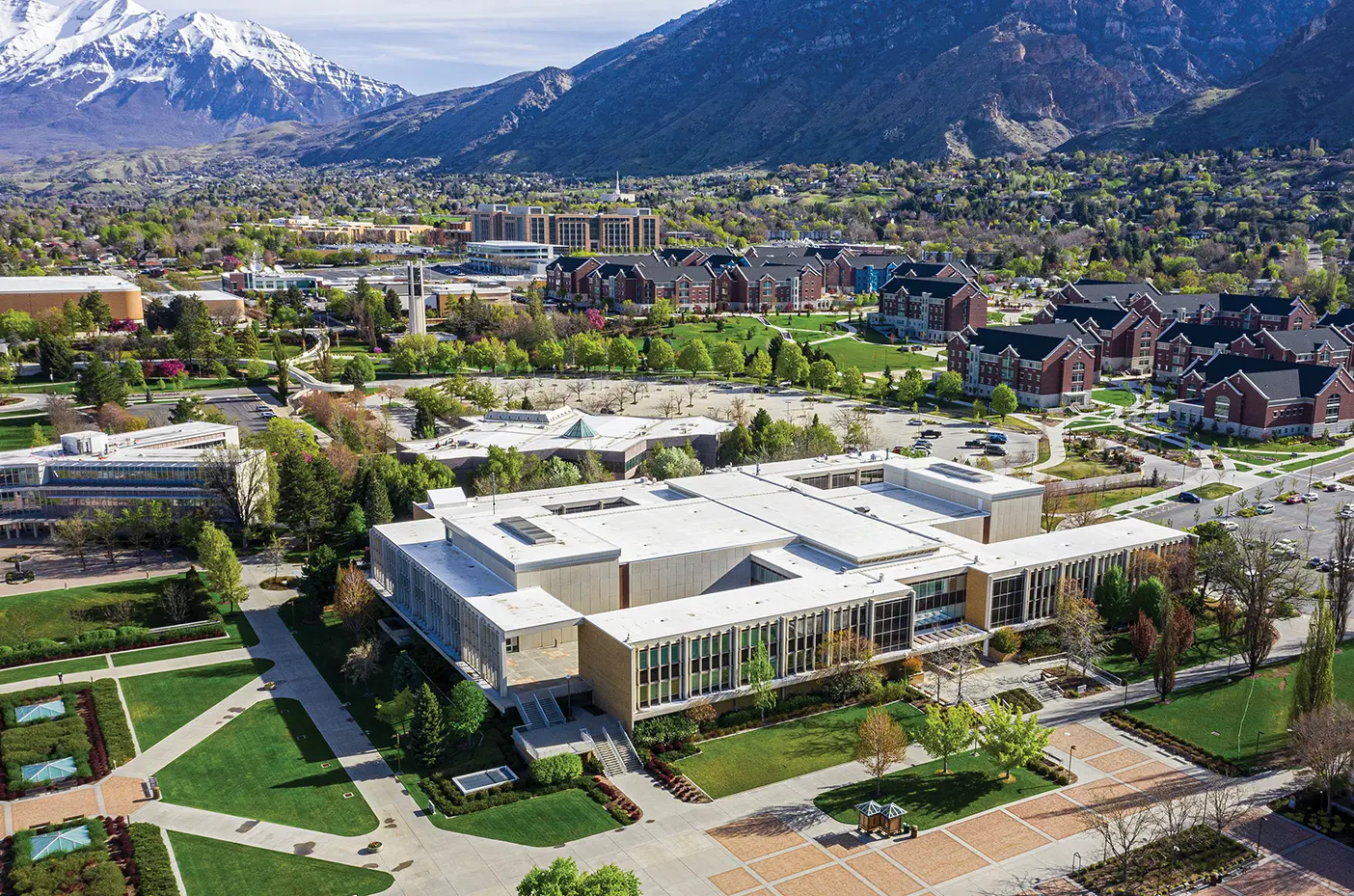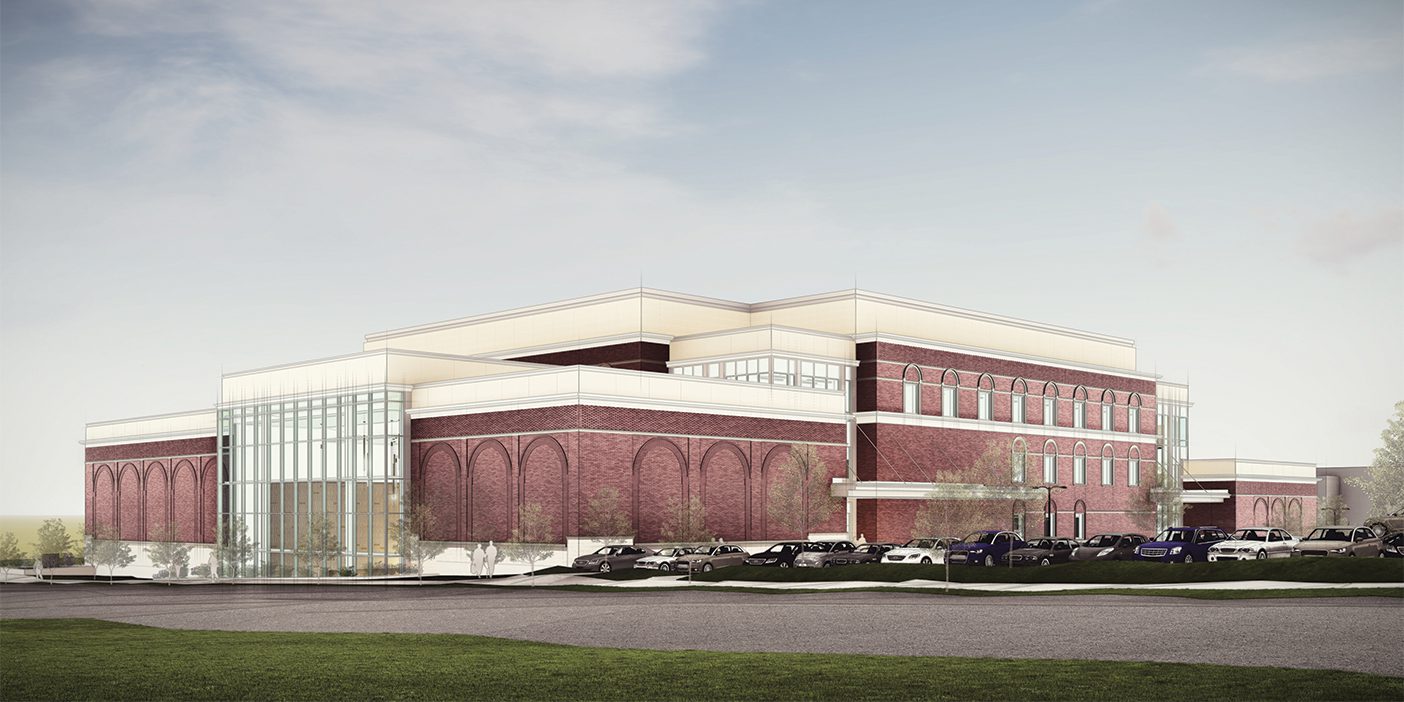Bravo!
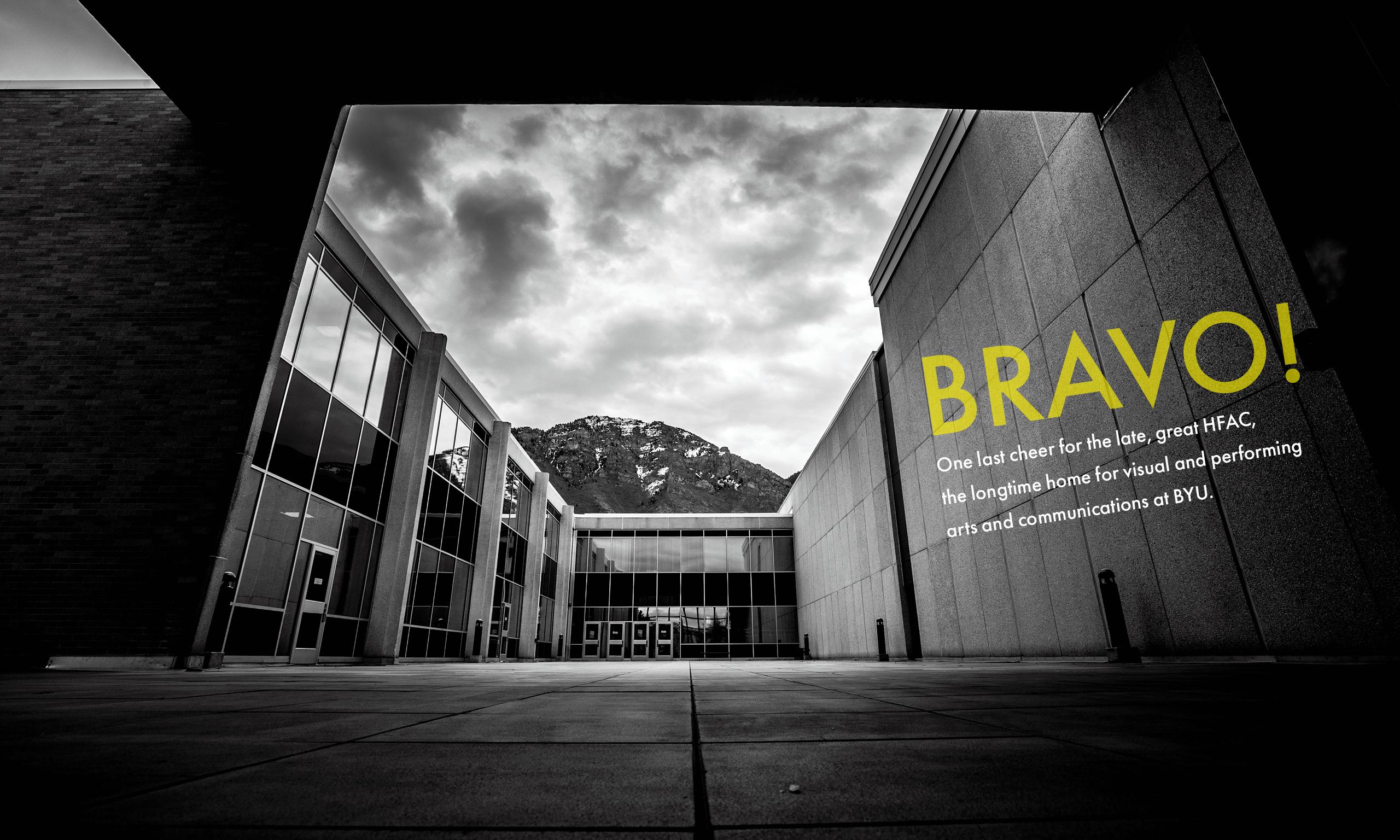
Bravo!
One last cheer for the late, great HFAC, the longtime home for visual and performing arts and communications at BYU.
By Peter B. Gardner (BA ’98, MA ’04, MBA ’22) in the Winter 2023 Issue
When you’re an illustration student and your building is coming down, the walls start to look like sketchpads.
In fall 2022, fifth-floor classrooms in the Franklin S. Harris Fine Arts Center’s A Wing—like prehistoric caves—were crowded with pictograms and characters. It was a trove of anthropological insight into the minds of the last dwellers of these halls before the BYU Departments of Art, Design, and Theatre and Media Arts migrated to BYU’s West Campus (the old Provo High) at the end of the summer in preparation for the demolition and replacement of the HFAC. The School of Music was the only holdout, awaiting the completion of the Music Building before vacating at the end of the semester.
One wall in a deserted classroom seemed dedicated to the HFAC’s impending demise, featuring an ensemble cast of destroyers—a fire-belching bionic dragon, descending asteroids, a T-Rex—all leading up to a lonely tombstone marked, “Harris 2022.” Elsewhere a cartoony Thanos decreed the building’s fate: “Reduced to atoms.”
Other students left self-portrait signatures and farewell messages: “Goodbye HFAC” and “RIP HFAC.”
In a shadowy corner of another wall was a lightly scrawled two-eyes-and-a-mouth apparition accompanied by the words “Goodbye to all the ghosts.”
Over the HFAC’s 57 years a host of personalities haunted the five floors of the building—from its labyrinthine hallways to its grand stages to its tiny practice rooms. Thanks to spaces like the Gerrit de Jong Concert Hall, the Franklin and Florence Jepperson Madsen Recital Hall, the T. Earl and Kathryn Bassett Pardoe Drama Theatre, the Miriam Nelke Experimental Theatre, and the B.F. Larsen Gallery, the names of early BYU arts faculty and administrators echoed in the hallways and in campus memory.

Hosting classes and hundreds of performances and exhibits a year, the HFAC was a hive of creativity, always abuzz with creators at work. Generations of faculty—themselves noted artists, performers, and communicators—welcomed tens of thousands of students into the HFAC, from intro-level artists with drawing tablets under arm to operatic rising stars with Metropolitan Audition titles to their name. Before the School of Communications left for other digs, aspiring anchors practiced their craft during KBYU Eleven News at Noon broadcasts. Faculty and student teams hammered together stage sets and stitched costumes. Violinists and trumpeters and timpani players crowded into theater pits to play unseen as actors belted show tunes above. Dancers in colorful garb stomped and pirouetted and jumped through hoops. Students lined underground hallways with elaborate storyboards for films short and long.
They were all striving, in part, to fulfill a mandate from Elder Spencer W. Kimball, given at a 1967 devotional two years after the dedication of the HFAC: “For long years I have . . . been waiting for someone to do justice in recording in song and story and painting and sculpture the story of the Restoration. . . . [This] story of Mormonism has never yet been written nor painted nor sculpted nor spoken. It remains for inspired hearts and talented fingers yet to reveal themselves.”¹
Soon after this call to action, the college inaugurated the annual Mormon Arts Festival, an artistic extravaganza featuring drama, dance, visual arts, music, and literature by Latter-day Saints and often on gospel-related themes. Using every stage and gallery space throughout the HFAC, the event, which ran from 1969 through 1984, would draw thousands of visitors. At the heart of it all in the Larsen Gallery, the orchestra and jazz ensemble performed for couples gussied up in suits and evening gowns for the Mormon Arts Ball.
Formal occasions aside, the HFAC was always a bit quirky. Its perplexing subterranean floor plan was tough for wayfinding (but perfect for students playing hide-and-seek or sardines). Conceived under a strict budget, it was built to be pragmatic and functional and adequate for modest growth—but not the enrollment boom that would soon come. “So much has changed academically within our college,” says College of Fine Arts and Communications dean Edward E. Adams (MA ’91). “In 1965 we did not have a Department of Design, a film program, a commercial music program, or an animation major. Those areas now represent close to half of the majors in our college, and we needed spaces” for them.
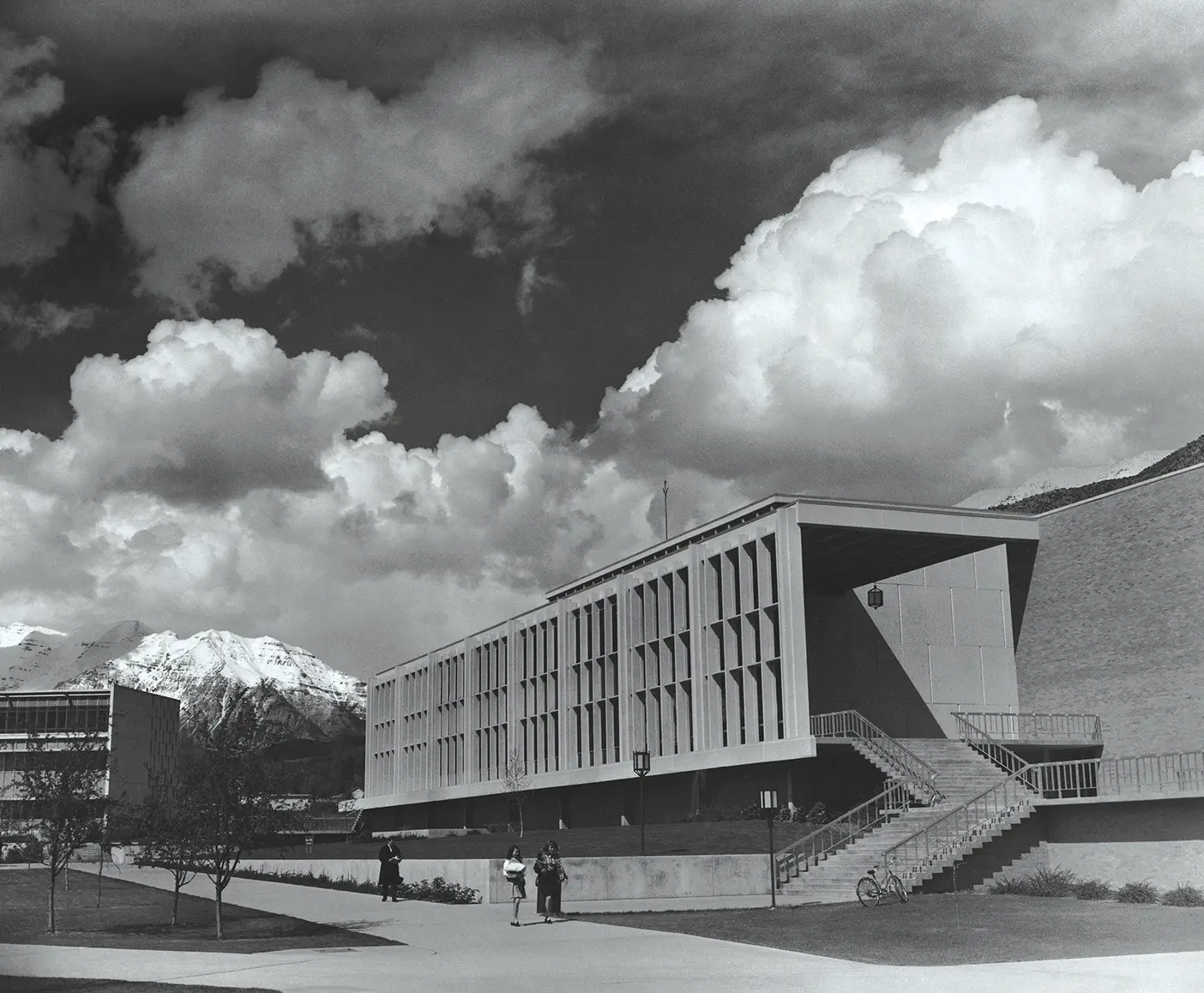
Stacked stages saved space, but they also proved problematic—senior recitals in the Madsen sometimes providing accompaniment for soliloquies in the Pardoe downstairs. The de Jong had no back stage to speak of. The hallways were narrow, the building didn’t anticipate evolving technology needs, and a major renovation proved to be cost prohibitive and would have meant losing classroom space.
The building was artsy and eccentric and long past its prime.
And beloved. For those who called it home for years or decades, it was a place where the visions of their minds and spirits could take shape—embodied in sound and spectacle, in film and fonts, in print and pigment and pixels.
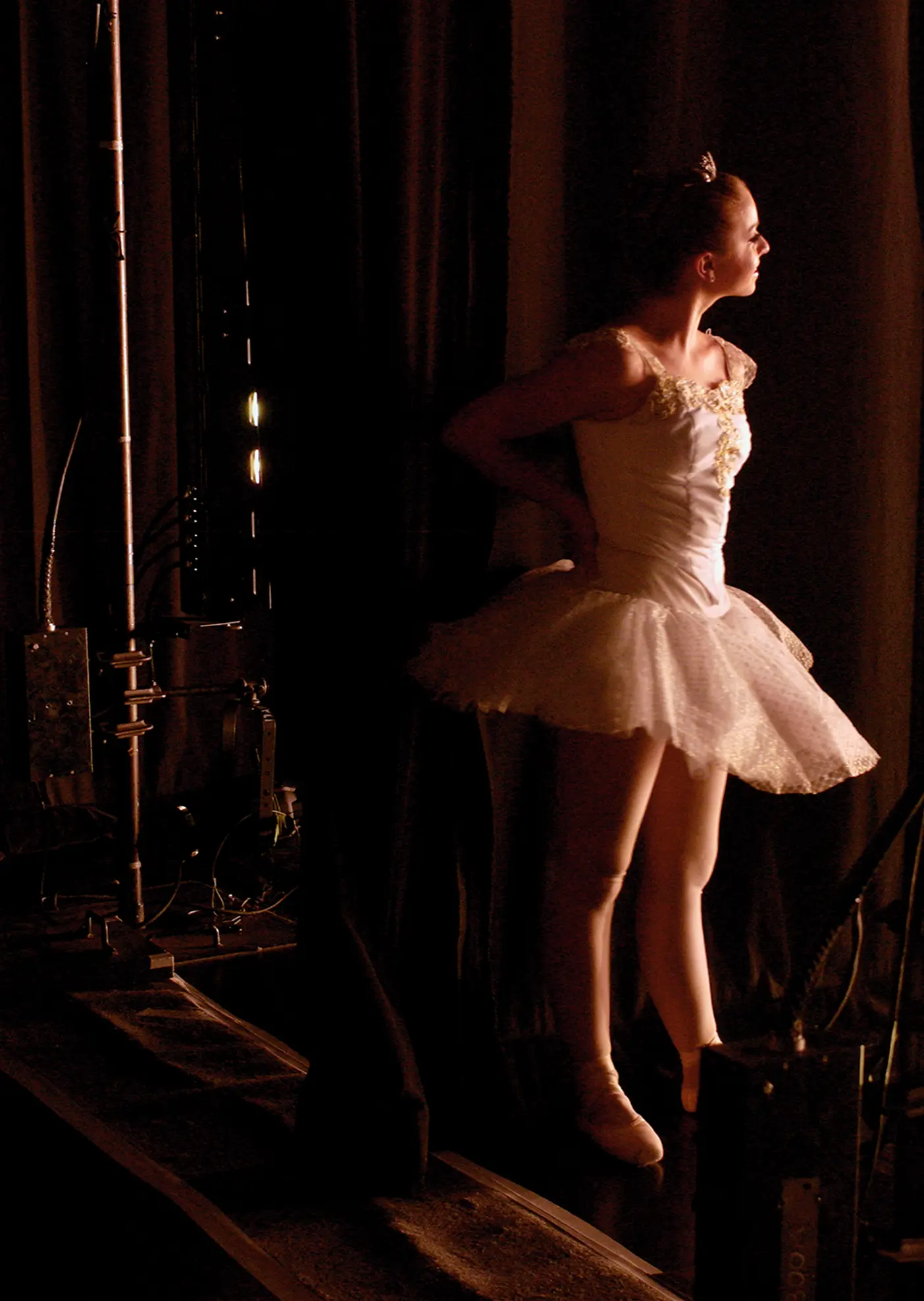
As the School of Music moves to the state-of-the-art Music Building, the HFAC walls are coming down, making space for a new Arts Building designed with modern students and current college offerings in mind. When the building is finished in 2025, Adams says there will be a cinema to display student films, a photography studio, a collaborative hub for design students, and new galleries and stunning performance venues, along with offices, classrooms, and studios. But built as it will be on the same footprint as the old building, the Harris Fine Arts Center and half a century of history and tradition will always provide a foundation.
It’s a foundation that won’t soon be forgotten. As a former student inhabitant wrote on a wall that no longer exists: “Goodbye HFAC, you’ve served us well.”
NOTE
- Spencer W. Kimball, “Education for Eternity,” 1967 BYU devotional address; text and audio available at speeches.byu.edu.
Update: See three live camera views of the HFAC demolition here, or submit a memory of your time in the HFAC here.
Feedback Send comments on this article to magazine@byu.edu.



